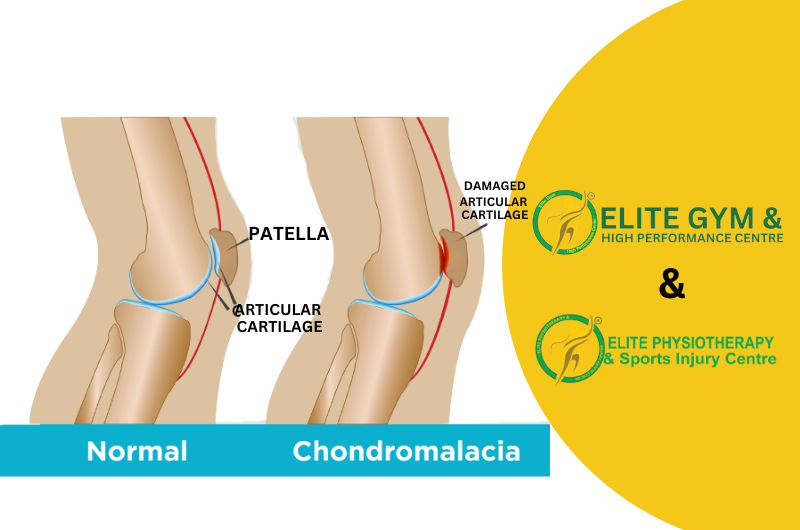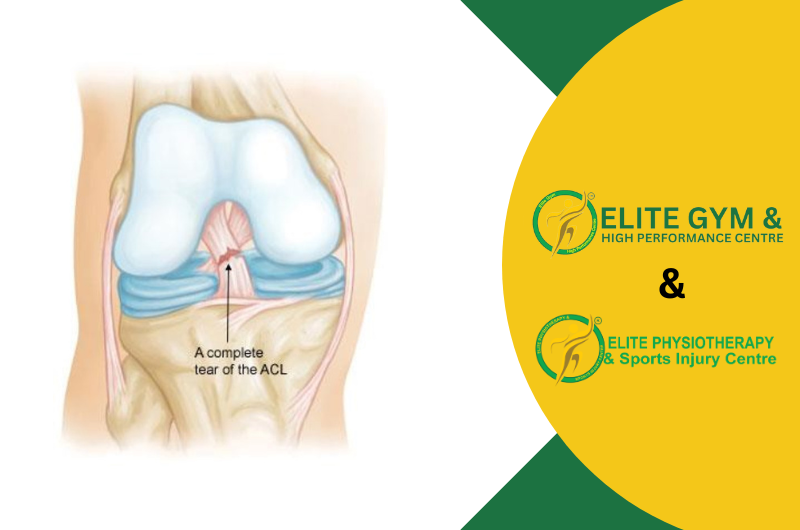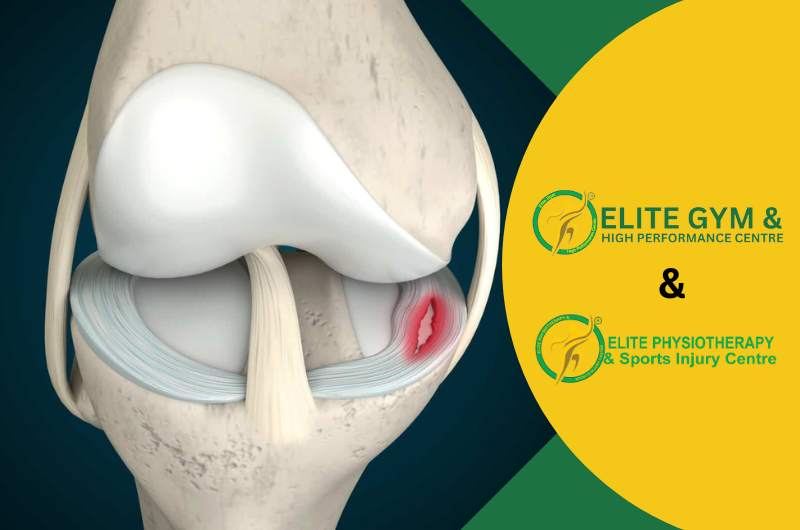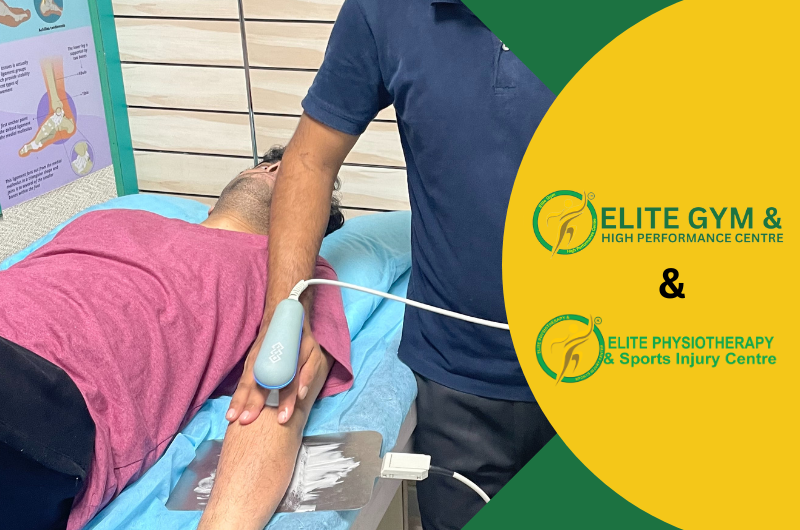Millions of individuals worldwide suffer from knee arthritis, a degenerative joint disease that is more common among sports, older adults, and persons in high-impact jobs. For those with knee arthritis, our specialized therapeutic methods at Elite Physiotherapy and Sports Injury Centre focus on minimizing discomfort, regaining function, and enhancing quality of life. This article goes into great detail on knee arthritis, including its causes, symptoms, diagnosis, and the cutting-edge physiotherapy treatments our clinic offers.
What is Knee Arthritis?
The primary cause of knee arthritis is the degeneration of the knee joint’s cartilage, which results in pain, swelling, and restricted movement. Rheumatoid arthritis (RA) and osteoarthritis (OA) are the two most common types:
- Osteoarthritis (OA): A “wear-and-tear” form of arthritis, osteoarthritis (OA) is frequently observed in athletes and older persons. It is caused by the slow deterioration of cartilage.
- Rheumatoid Arthritis (RA): The autoimmune disease known as rheumatoid arthritis (RA) causes inflammation and potential joint abnormalities when the body’s immune system targets the joint lining.
Causes and Risk Factors
Numerous variables, including a mix of lifestyle, injury history, and genetics, can lead to knee arthritis. Important elements consist of:
Age:
- As people age, especially beyond fifty, their risk of having knee arthritis increases.
Prior Injuries:
- Knee injuries including meniscus tears, ligament damage, or fractures might raise the risk.
Weight:
- Carrying too much weight strains the knee joints and speeds up cartilage deterioration.
Genetics:
- People may be more susceptible to knee arthritis if they have a family history.
Occupational Factors:
- Jobs involving heavy lifting or kneeling that cause repeated knee stress may increase the risk.
Symptoms of Knee Arthritis
The following symptoms are frequently seen in patients who arrive to Elite Physiotherapy and Sports Injury Centre:
Pain: Usually gets better with rest and gets worse with activities.
Swelling: Knee joint inflammation is frequent, particularly with extended usage.
Stiffness: It’s common to have less range of motion and flexibility, especially after extended periods of inactivity.
Deformity: Joint deformity may develop in more severe instances, impacting walking and alignment.
Grinding Sensation: When moving the knee, patients may feel as though it is cracking or grinding.
Seeking early assistance can help prevent long-term harm if you encounter any of these symptoms.
Diagnosis of Knee Arthritis
At Elite Physiotherapy and Sports Injury Centre, our team starts with a comprehensive clinical evaluation, which is frequently followed by imaging if required:
Clinical Examination: To determine the degree and functional limits, we evaluate alignment, muscular strength, and range of motion.
X-Rays: An X-ray can reveal the degree of bone alterations, joint space constriction, and cartilage loss.
MRI: To check for injury to the meniscus and ligaments, an MRI may be suggested for a thorough evaluation of soft tissues.
Physiotherapy Management at Elite Physiotherapy and Sports Injury Centre
One of the best non-invasive ways to treat knee arthritis is through physiotherapy. We provide customized programs at Elite Physiotherapy and Sports Injury Centre to promote joint function, mobility, and long-term pain reduction. The following therapies are incorporated into our approach:
1. Therapeutic Exercise
The foundation of managing arthritis is therapeutic exercise. To strengthen the muscles surrounding the knee, lessen joint stress, and promote general function, we employ specialized training regimens. Typical workouts consist of:
- Quadriceps Strengthening: Strengthening the quadriceps with exercises like leg lifts and squats helps to stabilize the knee.
- Hamstring and Glute Strengthening: Such as bridges, can support the knees.
- Range-of-Motion Exercises: To preserve knee mobility, use mild stretching exercises.
- Aerobic Exercises: Without putting undue strain on the knee joint, low-impact sports like swimming and cycling can help control weight and enhance cardiovascular fitness.
2. Manual Therapy
To increase blood flow, decrease stiffness, and move the knee joint, our licensed therapists use manual therapy:
- Soft Tissue Mobilization: Lessens tenseness in the tendons and muscles around it.
- Joint mobilizations: To increase the range of motion in the knee.
- Myofascial Release: Pain relief and increased soft tissue flexibility are two benefits of myofascial release.
3. Electrotherapy
We use cutting-edge electrotherapy methods to reduce pain and manage inflammation, such as:
- Ultrasound Therapy: Promotes tissue repair by lowering pain and inflammation.
- Transcutaneous Electrical Nerve Stimulation (TENS): By activating sensory nerves, transcutaneous electrical nerve stimulation (TENS) lessens the experience of pain.
- Interferential Therapy (IFT): Low-frequency electrical currents are used in interferential therapy (IFT) to lessen inflammation and discomfort.
- High-intensity class 4 laser: It helps to improve blood circulation to your knee which eventually helps in pain reduction and recovery.
- CRET Therapy: It is a Highly advanced Device for Pain relief and faster recovery, it will help with knee arthritis and make your recovery faster.
4. Cryotherapy and Thermotherapy
Therapies focused on temperature can offer substantial relief:
- Cryotherapy (Cold Therapy): Cryotherapy, often known as cold treatment, reduces swelling and inflammation, particularly after physical exertion.
- Thermotherapy (Heat Therapy): Heat treatment, or thermotherapy, improves blood flow, eases muscular tension, and reduces stiffness.
Depending on each patient’s demands, our team frequently switches between cryotherapy and thermotherapy, using each in a specific manner to reduce symptoms.
5. Kinesiology Taping
- Kinesiology tape is one supportive approach that can relieve knee joint tension and increase stability.
6. Hydrotherapy (Water Therapy)
- Exercises with water offer a low-impact, efficient way to strengthen and mobilize the knee without putting undue strain on it. For more severe forms of arthritis, this treatment is very helpful since it permits pain-free complete range of motion.
Lifestyle and Home Management Tips
Our goal at Elite Physiotherapy and Sports Injury Centre is to equip our patients with the knowledge they need to take care of their conditions daily. We provide advice on:
Weight management: Maintaining a healthy weight is essential for minimizing pressure on the knee joint.
Activity Modification: By offering guidance on how to modify everyday routines, our therapists assist patients in avoiding strenuous activities that worsen arthritis.
Pain management: Strategies include the use of walking aids, knee braces, and good posture.
Why Choose Elite Physiotherapy and Sports Injury Centre?
With our expertise in orthopedic and sports physiotherapy, Elite Physiotherapy and Sports Injury Centre is ready to provide specialized care for knee arthritis. You may rely on us for your recovery for the following reasons:
Expert Team: Our knowledgeable team of physiotherapists is current with the most recent findings and methods.
Customized Treatment Plans: We adjust each therapy program according to the patient’s objectives, activity level, and arthritis severity.
State-of-the-art Facilities: Our clinic has a variety of rehabilitation equipment, hydrotherapy pools, and advanced electrotherapy devices.
Patient-Centered Approach: From evaluation to discharge, we are dedicated to our patients’ recovery journey, ensuring they have a knowledgeable and supportive experience.
Conclusion
Although knee arthritis can be debilitating, it doesn’t have to define your life. Relief and increased functionality are achievable with the correct management strategy and a committed team at your side. Our goal at Elite Physiotherapy and Sports Injury Centre is to provide you with individualized, evidence-based care so you may live your best life.
Don’t put off getting assistance if you or someone you know has knee arthritis. To start your path to pain relief and increased mobility, get in touch with Elite Physiotherapy and Sports Injury Centre right now.





